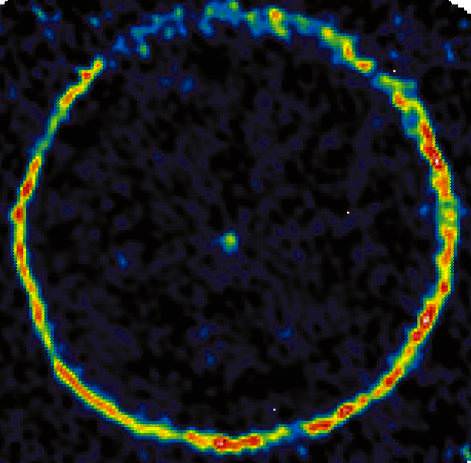[/caption]
Carbon stars are similar to red giant stars. It’s a late stage in the evolution of a star on its way to death. What makes a carbon star different from a regular red giant star is the fact that there’s more carbon than oxygen in its atmosphere. That’s a carbon star. I’m guessing you’re going to need a more complete explanation.
A star shines because it’s fusing elements in its core; usually hydrogen into helium. When a star runs out of fuel at its core, it stops putting out energy, and starts to collapse down. This collapse increases the pressure and temperature at the core, and allows a shell of hydrogen around the core to ignite. The star bursts to life again with thousands of times the luminosity it had before. This increased energy output bloats the star up until it becomes a red giant. When our Sun becomes a red giant, it will engulf the orbits of the inner planets: Mercury, Venus, and yes, even Earth.
Astronomers think there are a couple of ways that stars can gain larger amounts of carbon in their atmospheres. The first is the classical theory of carbon stars. Stars more massive than our Sun will be fusing helium in their cores when they reach a certain point in their lives. The output of these helium fusion reactions is carbon. Convection currents deep within the star carry the carbon upwards to the surface, where it’s deposited in the star’s outer atmosphere.
The second way carbon stars can appear is through a binary system. One star is a red giant, and the other star is a white dwarf. Millions of years ago, both the red giant and the white dwarf were main sequence stars, and during this period one star siphoned material off the other and collected it on its outer atmosphere. Today we see a red giant with an unusually high amount of carbon in its atmosphere.
We have written many articles about stars here on Universe Today. Here’s an article about pure carbon stars discovered, and here’s a theory that carbon stars might detonate as gamma ray bursts.
If you’d like more information on stars, check out Hubblesite’s News Releases about Stars, and here’s the stars and galaxies homepage.
We have recorded several episodes of Astronomy Cast about stars. Here are two that you might find helpful: Episode 12: Where Do Baby Stars Come From, and Episode 13: Where Do Stars Go When they Die?
Reference:
Wikipedia

